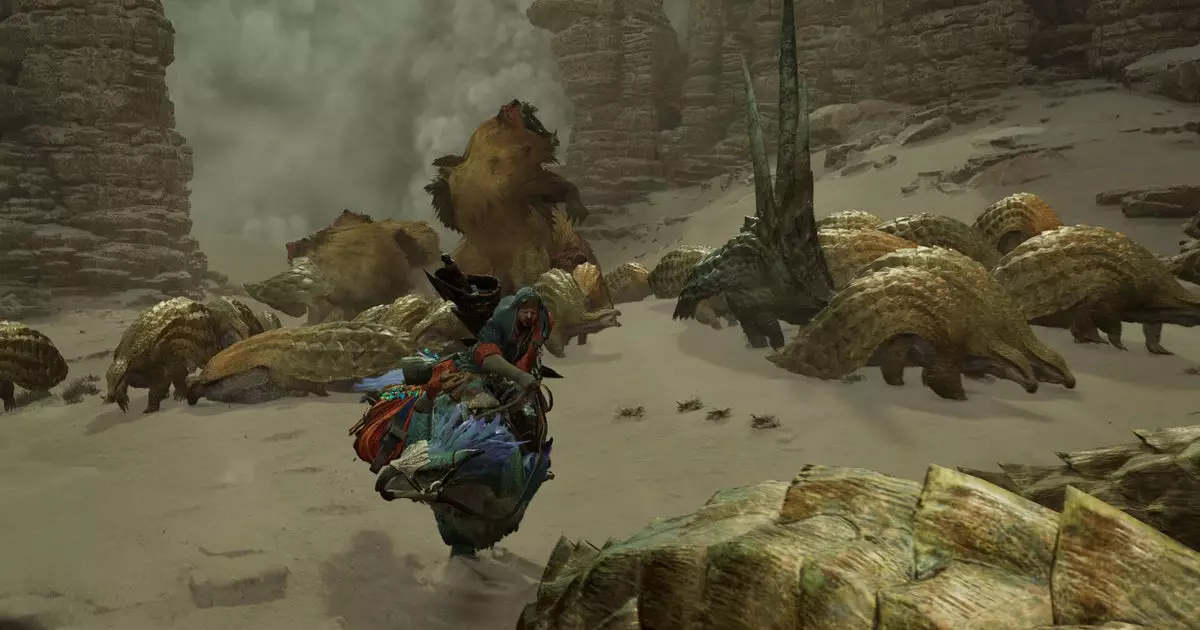In the ever-evolving landscape of video games, few franchises have managed to capture players’ imaginations quite like the Monster Hunter series. The recent beta release of Monster Hunter Wilds has generated a substantial buzz, particularly concerning its character customization features. Players, including myself, may find themselves engrossed in perfecting their in-game avatars, such as fine-tuning the colors of their feline companions. However, the allure of character aesthetics can often overshadow a crucial aspect of gameplay: combat mechanics. As I delved into my experience with the beta, it became apparent that players are grappling with varying opinions regarding the overall feel of combat, sparked significantly by a dramatic change in the game’s hitstop mechanics.
At its core, hitstop is a crucial mechanic that influences how players perceive the weight and power of their in-game actions. Defined as a brief moment where the game pauses upon a successful attack—allowing players to savor the impact—hitstop creates a sense of satisfaction that reinforces the feeling of delivering a strong blow. In previous Monster Hunter titles, developers carefully calibrated the duration of hitstop to enhance immersion, making the experience more visceral. For instance, in Monster Hunter Generations Ultimate, a swing of the switch axe generates an eight-frame hitstop, giving players ample time to appreciate the power of their attack, which is particularly impactful when running at 30 frames per second.
The recent discussions have highlighted significant changes in Monster Hunter Wilds. Notably, players have observed that the hitstop across most weapon types has been reduced or eliminated entirely. This alteration has led to perceptions that the combat experience feels “off” or less impactful compared to previous iterations of the series.
As players engaged with the beta, many expressed their dissatisfaction with the reduced hitstop. A clip posted by user Blue Stigma poignantly illustrated the discrepancies in combat feel among the different versions of the game. For players accustomed to the satisfying combat mechanics of prior titles, the new approach in Wilds may feel disheartening. The diminished sensation of power can lead to frustration, hampering player engagement and their connection to the experience.
Feedback from the community suggests that the design change has created a noticeable contrast in gameplay enjoyment. Some players who might otherwise be captivated by the action find themselves questioning the very nature of the game’s combat integrity. With initial impressions colored by such feelings, it’s easy to see why many are hesitant to embrace what could otherwise be a promising new installment to the series.
The Complexity Beyond Combat Mechanics
Critics have raised the question of whether the feelings of dissatisfaction regarding hitstop are merely a surface-level issue. While hitstop undoubtedly contributes to player enjoyment and immersion, other factors—such as game pacing, weapon variety, and overall game physics—interplay with combat mechanics to influence the overall experience. A player’s perception is influenced by more than just hitstop; the entirety of combat design, user interface, and visual feedback contributes significantly to how satisfying a game feels.
Additionally, it is essential to recognize that combat enjoyment is subjective. What one player perceives as a lack of “bonk” quality might be another player’s opportunity for new gameplay rhythms and challenges. This diversity of opinion encourages a broader discussion about player preferences and the evolving landscape of game design.
As Monster Hunter Wilds continues to develop, striking a balance between innovative features and beloved mechanics remains crucial for player satisfaction. The discourse surrounding hitstop reflects a more profound desire for meaningful engagement in gameplay, urging developers to evaluate the consequences of design choices. As the community learns to navigate these changes, dialogue among players can foster a better understanding of what captures the essence of combat in the Monster Hunter universe. By listening to feedback and assessing players’ expectations, Capcom can ensure that the final release of Monster Hunter Wilds lives up to the legacy of its predecessors while also carving its unique space in the franchise.


Leave a Reply